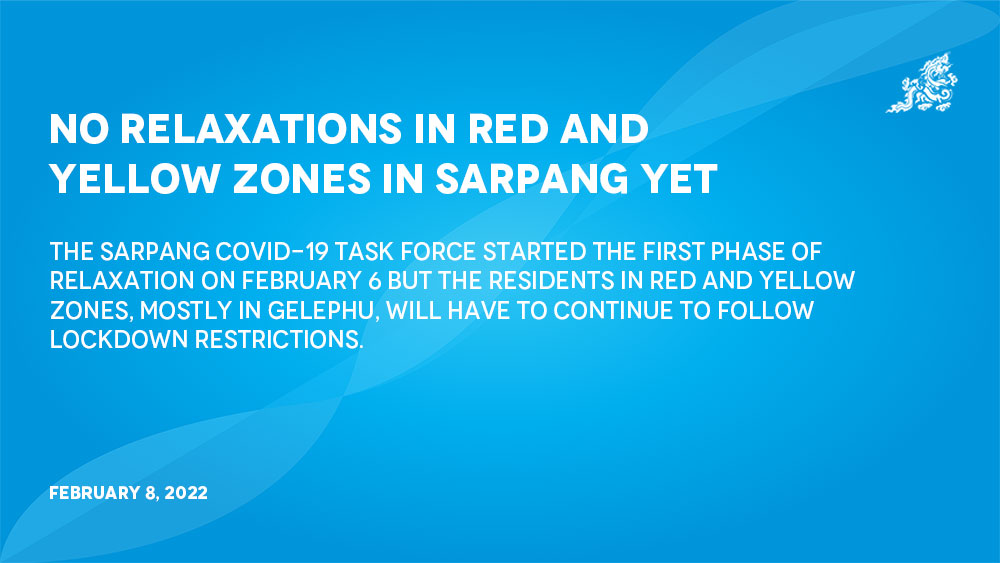Nima | Gelephu
The Sarpang Covid-19 task force started the first phase of relaxation on February 6 but the residents in red and yellow zones, mostly in Gelephu, will have to continue to follow lockdown restrictions.
The dzongkhag has been under lockdown for almost one month since the country announced the lockdown last month.
Residents expected relaxations after the dzongkhag reported zero community cases for four consecutive days last week. Sources said the relaxation in other dzongkhags started even with active community cases.
A resident from Gelephu said that it’s becoming difficult to stay home as most of the people in Gelephu depend on running small business firms for a living.
“The businesses have been affected for the past two years, but we have to pay rent and meet other expenditures. We need to follow quarantine measures for imported products, like in the initial days. Imported products are supplied to the market directly these days,” he said.
He added that moving to the workplace from Gelephu to Chhokhorling was difficult despite getting an e-pass for movement. “Officials in the field ask for a road permit. I think movement with a Covid-19 test would be good.”
The relaxation, mostly in green zones, comes after almost four weeks of lockdown in the dzongkhag.
The first phase of relaxation in the dzongkhag allowed movement, opening of businesses, construction, and opening of institutes in the green zone. However, there were only a few relaxations in the yellow and red zones.
Singye, Sershong, Chuzergang, Taraythang, and Chudzom gewogs are green zones. The remaining gewogs and demkhongs in Gelephu thromde fall under yellow and red zones.
Samdrupling, Namkhaling, Jampeling, and Rabdeyling reported more than 380 cases since Sarpang reported the first community case last month. Sarpang Central School reported the highest cases outside Gelephu thromde.
The color-coding of the respective zones changes depending on the daily test results, with the health teams conducting continuous testing and surveillance for almost one month in the dzongkhag.
Movements in the green zones are allowed until 6pm, while those in yellow zones in gewogs are allowed to move within the chiwog until 6pm. The movement in yellow zones under the thromde is allowed in respective zones with movement cards.
No movements are allowed in the red zone.
Government offices and corporate offices in red and yellow zones will continue to remain closed, and the essential delivery team will continue with essential supplies. All shops in green zones are allowed to open until 5pm with safety protocols.
Health services in green zones will resume normal outpatient department services and hospital services will be met through teleconsultations and door-to-door service in red and yellow zones.
The monastic institution in the red and yellow zones will work in containment mode, and those in green zones are allowed to open. Private training institutes in red and yellow zones will remain closed but can be opened in green zones.
According to the notification from the dzongkhag Covid-19 task force, construction activities will be allowed with prior approval and in strict containment mode in yellow and red zones.
The transportation of materials is also allowed with prior approval and process through the e-pass management system. The task force would be limiting the number of vehicles.
“Transportation of construction materials within the green zones is allowed. But, prior approval must be obtained to transport materials from red and yellow zones.”
However, sources said it is difficult to get the e-pass for the transport of construction materials. The e-pass movement permits are mostly given for essential items.


